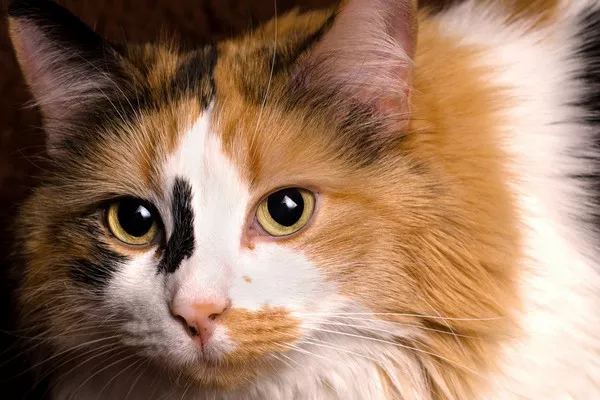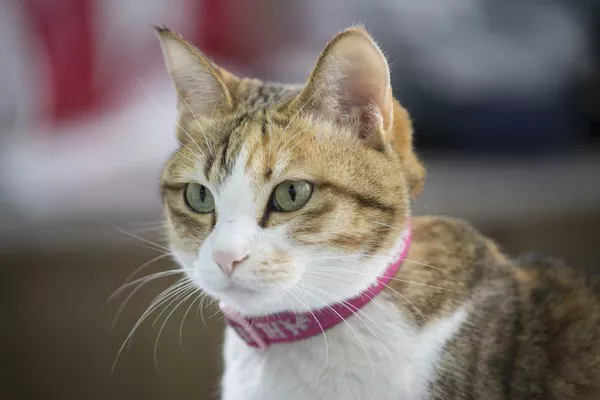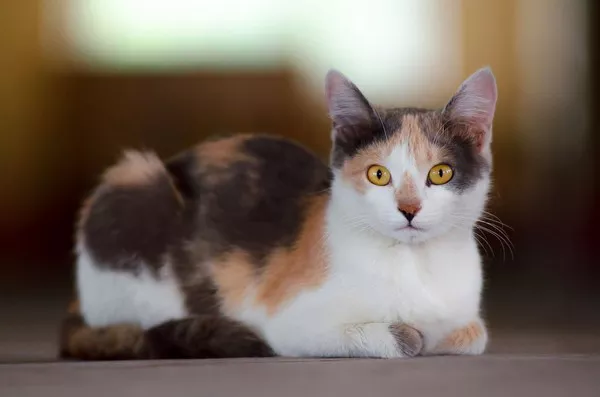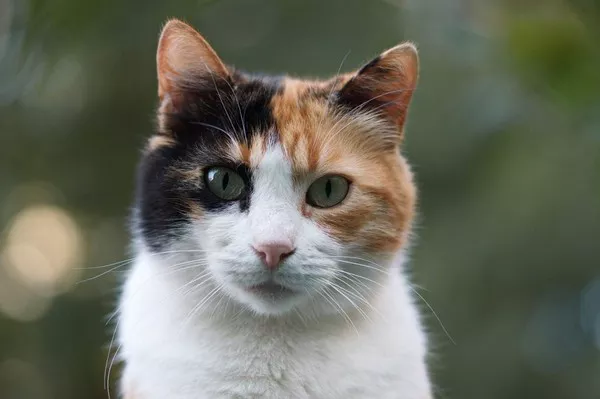Calico cats, with their mesmerizing tricolor coats, often evoke a sense of mystery and enchantment. As cat enthusiasts and owners of these unique felines, it’s natural to wonder about various aspects of their appearance, including the color of their eyes. The eyes of calico cats, like those of any other cat, can be captivating, each pair seemingly telling a story of its own. In this exploration, we delve into the question of whether calico cat eyes change color, unraveling the mysteries that contribute to the enigmatic beauty of these multicolored feline companions.
The Complexity of Calico Coat Genetics
Tricolor Marvel:
1. Genetic Basis: The striking tricolor coat of calico cats is a result of specific genetic factors. Calicos possess a combination of black, orange, and white fur, and this intricate coloration is linked to the presence of two distinct coat color genes: the orange gene (O) and the black gene (o).
2. X Chromosome Inactivation: The genes responsible for the coat colors are located on the X chromosome. In female cats (XX), one X chromosome in each cell randomly undergoes a process called X chromosome inactivation. This means that some cells express the genes for black fur, while others express the genes for orange fur, creating the distinctive patchwork pattern.
Eye Color Genetics:
1. Normal Eye Color Inheritance: In cats, eye color is primarily determined by genetics. The normal eye colors in cats range from shades of yellow and green to blue. The genes influencing eye color interact with the genes responsible for coat color, contributing to the overall appearance of the cat.
2. Stable Eye Color: In most cases, once a cat’s eye color is established, it remains relatively stable throughout its life. The genetic factors that influence eye color are present from birth, and changes in eye color are not a common occurrence in healthy cats.
Understanding the Eye Colors of Calico Cats
Variety of Eye Colors:
1. Blue Eyes: Some calico cats, particularly those with a significant amount of white in their coats, may have striking blue eyes. Blue eyes in cats are often associated with the presence of the white (W) gene, which can contribute to both a white coat and blue eyes.
2. Yellow and Green Eyes: The majority of calico cats, however, typically have yellow or green eyes. These eye colors are influenced by the presence of pigments such as melanin in the iris. The specific shades can vary, creating a diverse range of eye colors within the calico population.
Potential Changes in Kittens:
1. Developmental Stages: In the early stages of a calico kitten’s life, the eye color may appear to change. Many kittens are born with blue eyes, and their permanent eye color starts to emerge as they age. The final eye color is usually established by the time the kitten reaches three to four months of age.
2. Transition to Adult Eye Color: The transition from blue to the final eye color is a natural part of the kitten’s development. During this time, the pigmentation in the iris develops, contributing to the adult eye color that will remain relatively stable throughout the cat’s life.
Factors Influencing the Perception of Eye Color Changes
Lighting Conditions:
1. Natural and Artificial Light: The perception of a cat’s eye color can be influenced by lighting conditions. Natural sunlight, artificial lighting, and the angle at which light interacts with the eyes can create variations in the apparent color of the eyes.
2. Reflective Qualities: The reflective qualities of the eyes can also play a role. The tapetum lucidum, a layer of cells in the eyes of many animals, including cats, reflects light and enhances night vision. This reflective layer can give the eyes a luminous appearance and may contribute to the perception of changing eye colors under different lighting.
Age-Related Changes:
1. Aging Process: As cats age, there can be subtle changes in the appearance of their eyes. These changes are typically related to the aging process and may include clouding of the lens or changes in the pupil size. However, these changes are distinct from a significant shift in eye color.
2. Health Considerations: In some cases, age-related changes in eye appearance may be associated with underlying health conditions, such as cataracts. Regular veterinary check-ups can help monitor your cat’s eye health and address any concerns.
Genetic Diversity:
1. Individual Variation: The genetics of calico cats, like all cats, exhibit a degree of individual variation. While the overall patterns of coat color and eye color inheritance are well-established, the specific combination of genes in an individual cat can result in unique variations.
2. Influence of Ancestors: The genetic makeup of a calico cat is influenced not only by the immediate parents but also by the combination of genes inherited from ancestors. This genetic diversity can contribute to the range of eye colors observed in calico cats.
Addressing Common Misconceptions
Myth of Changing Eye Colors:
1. Stable Eye Colors: It is essential to dispel the myth that calico cat eyes change color significantly over time. In reality, once a cat’s eye color is established, it remains relatively stable throughout its life.
2. Perception vs. Reality: Any perceived changes in eye color are likely due to factors such as lighting conditions, age-related changes, or individual genetic variation. The inherent stability of eye color in healthy cats contradicts the notion of drastic and frequent changes.
Health-Related Concerns:
1. Consulting a Veterinarian: While subtle changes in eye appearance are generally normal, any significant or sudden alterations in eye color, cloudiness, or other abnormalities should prompt a visit to the veterinarian. Changes in eye color accompanied by other symptoms may indicate underlying health issues that require attention.
2. Monitoring Eye Health: Regular monitoring of your calico cat’s eye health, coupled with veterinary check-ups, ensures early detection of potential issues and promotes overall well-being.
Conclusion
In conclusion, the question of whether calico cat eyes change color is rooted in the intricate interplay of genetics, developmental stages, and individual variation. While the coat colors of calico cats are renowned for their dynamic and patchwork patterns, their eye colors tend to exhibit greater stability. Once a calico cat’s eye color is established, it remains relatively constant throughout its life, contributing to the unique and captivating allure of these tricolor feline companions.
As cat enthusiasts, appreciating the natural beauty and uniqueness of calico cats involves understanding the science behind their coat and eye colors. Embracing the diversity within the calico population and recognizing the factors that influence the perception of eye color allows us to celebrate the enchanting and enigmatic qualities of these beloved feline companions. Ultimately, whether gazing into the mesmerizing blue eyes of a white-patched calico or the captivating green eyes of an orange-black mottled beauty, the charm of calico cats lies not in the myth of changing eye colors but in the enduring and captivating gaze they share with their human counterparts.



























